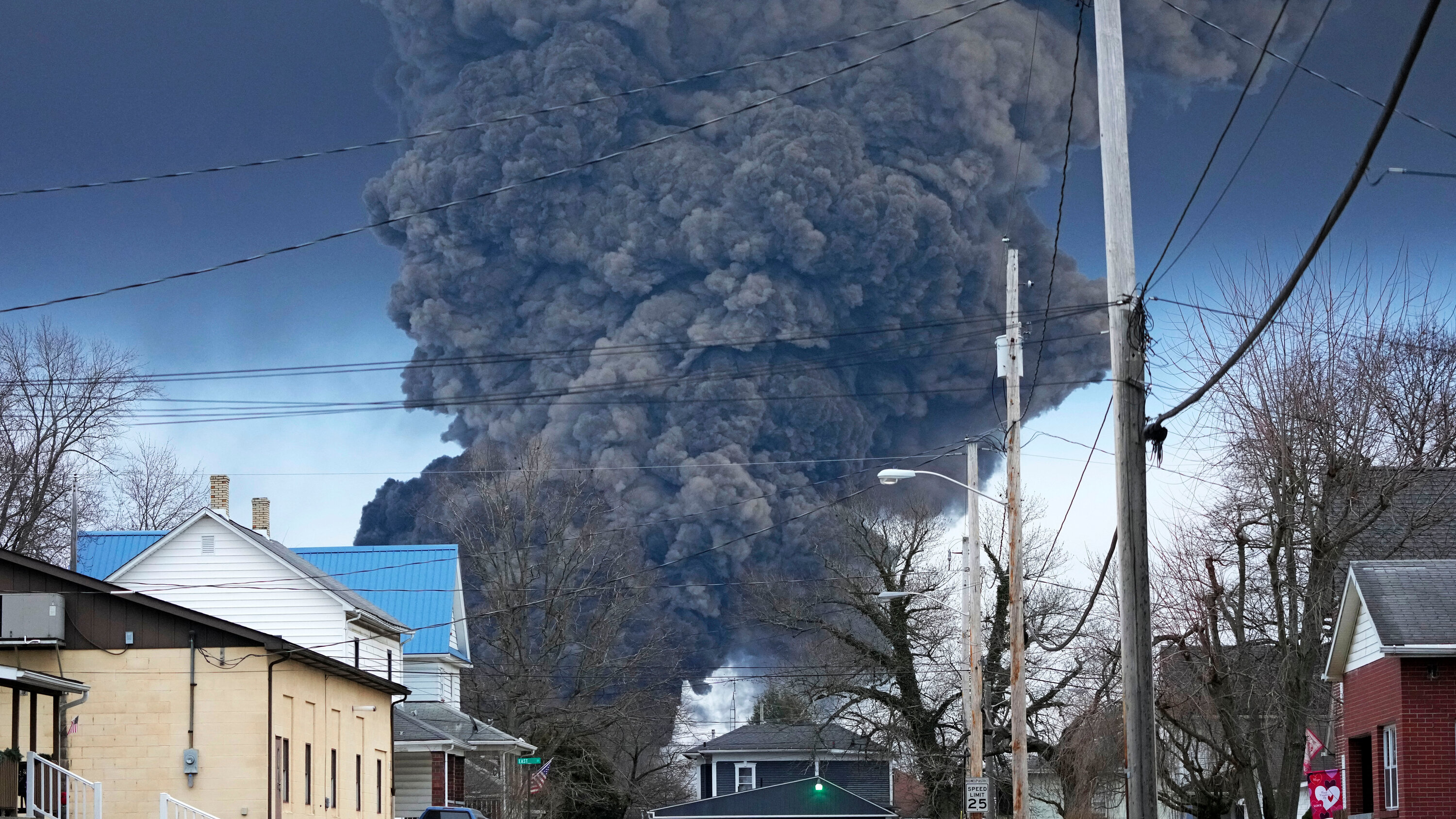Ohio Train Disaster: Building Contamination From Toxic Chemicals

Table of Contents
Types of Chemical Contamination and Their Sources
The Ohio train derailment released a cocktail of toxic chemicals, posing a multifaceted threat to the environment and the structures within the affected area.
Vinyl Chloride and its Impact
Vinyl chloride, a known carcinogen, is a primary concern. Its volatility allows it to easily seep into porous building materials like:
- Drywall
- Insulation
- Wood
- Concrete (to a lesser extent)
This process, known as off-gassing, can significantly impact indoor air quality, leading to prolonged exposure for residents. Detecting low levels of vinyl chloride is challenging, requiring specialized equipment and expertise. Long-term exposure is linked to:
- Liver damage
- Various cancers
- Respiratory issues
Other Toxic Chemicals Released
Beyond vinyl chloride, other hazardous substances released during the derailment include:
- Butyl acrylate
- Ethylhexyl acrylate
- Ethylene glycol monobutyl ether
These chemicals can contaminate buildings through:
- Airborne deposition (settling on surfaces)
- Water infiltration (through cracks and compromised structures)
The synergistic effects of multiple chemical exposures compound the health risks, making accurate assessment and remediation crucial.
Assessing the Scope of Contamination
Determining the full extent of building contamination presents significant challenges:
- Complex chemical dispersion patterns make pinpointing contamination zones difficult.
- The depth of penetration varies depending on the chemical and building materials.
Comprehensive testing is essential, including:
- Soil sampling to assess ground contamination.
- Water testing to evaluate potential contamination of wells and municipal water supplies.
- Building material testing to identify the presence and concentration of chemicals within structures.
Current testing methods have limitations, necessitating ongoing monitoring and the development of more sensitive detection techniques.
Health Risks Associated with Building Contamination
Exposure to the chemicals released in the Ohio train derailment poses substantial health risks.
Short-Term Health Effects
Immediate health consequences following exposure can include:
- Respiratory irritation (coughing, shortness of breath)
- Skin irritation (rashes, burning)
- Headaches
- Nausea
- Eye irritation
Early detection and treatment are paramount. For specific symptoms and guidance, consult resources from the CDC (Centers for Disease Control and Prevention) and the EPA (Environmental Protection Agency).
Long-Term Health Effects
Long-term exposure to these chemicals increases the risk of serious health problems, including:
- Cancer (various types)
- Chronic respiratory diseases
- Liver damage
- Neurological disorders
The latency period—the time between exposure and the onset of disease—can be extensive, making long-term health monitoring for affected residents absolutely vital.
Vulnerable Populations
Children, the elderly, and individuals with pre-existing health conditions are particularly vulnerable to the negative impacts of chemical exposure due to:
- Immature immune systems (children)
- Weakened organ function (elderly)
- Compromised health status (pre-existing conditions)
These populations require enhanced monitoring and prioritized access to healthcare services.
Remediation and Cleanup Efforts
Addressing the contamination requires a multifaceted approach.
Decontamination Procedures
Building decontamination may involve:
- Air scrubbing to remove airborne contaminants.
- Surface cleaning to remove chemicals from accessible surfaces.
- Material replacement of severely contaminated building components.
Removing deeply embedded contaminants presents significant challenges and often necessitates extensive demolition and reconstruction.
Environmental Cleanup
Beyond buildings, broader environmental cleanup is crucial, focusing on:
- Soil remediation to remove or neutralize contaminated soil.
- Water treatment to purify contaminated water sources.
The EPA and other agencies play a key role in overseeing these efforts, establishing cleanup standards and monitoring progress. Long-term monitoring and assessment strategies are needed to ensure the effectiveness of the remediation.
Property Valuation and Insurance Claims
The Ohio train disaster's impact on property values is significant, affecting residents' ability to sell or refinance their homes. Navigating insurance claims can be complex, requiring:
- Detailed documentation of the contamination.
- Professional assessments of property damage.
- Clear communication with insurance providers.
Property owners should seek legal counsel and expert assistance to protect their rights and obtain fair compensation.
Conclusion
The Ohio train derailment and subsequent toxic chemical spill present significant challenges regarding building contamination and associated health risks. Thorough testing, effective remediation strategies, and long-term monitoring are crucial to mitigate the potential long-term effects on the community. Understanding the extent of building contamination from the Ohio train disaster and implementing appropriate response measures are critical to ensuring the safety and future of East Palestine residents. For the latest updates on the environmental cleanup and health assessments, stay informed and consult reliable sources. Continue to search for information regarding the Ohio train disaster and its impact on building contamination.

Featured Posts
-
 Investigating The Just Contact Us Trend Tik Toks Response To Trump Tariffs
Apr 22, 2025
Investigating The Just Contact Us Trend Tik Toks Response To Trump Tariffs
Apr 22, 2025 -
 New Signal Chat Messages Implicate Hegseth Amidst Pentagon Chaos Accusations
Apr 22, 2025
New Signal Chat Messages Implicate Hegseth Amidst Pentagon Chaos Accusations
Apr 22, 2025 -
 The Impact Of Tariffs On Chinas Export Led Growth Model
Apr 22, 2025
The Impact Of Tariffs On Chinas Export Led Growth Model
Apr 22, 2025 -
 Open Ai Under Ftc Scrutiny Chat Gpts Future Uncertain
Apr 22, 2025
Open Ai Under Ftc Scrutiny Chat Gpts Future Uncertain
Apr 22, 2025 -
 Anti Trump Protests Nationwide Demonstrations And Their Impact
Apr 22, 2025
Anti Trump Protests Nationwide Demonstrations And Their Impact
Apr 22, 2025
